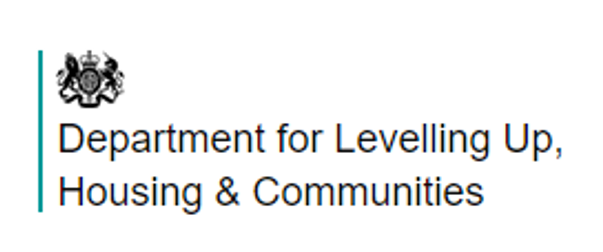Part 2: I’m dreaming of a White Paper:
In Part 1 we covered the view from the Ghosts of Christmas Past and Present. So looking ahead, what can we expect from the most feared of spectres:
The Housing White Paper, decoupled from the Autumn Statement, but hopefully strengthening the fair winds for associations, is expected in January. According to Javed, the Secretary of State for the Department of Communities and Local Government (DCLG), it will set out ‘a range of radical plans to boost housing supply’ including improving planning processes. Although falling short of a national housing strategy, it should also help us understand how far the government wants to go in terms of acting on its somewhat belated appreciation that supply (and housing markets in general) require a mixed tenure approach, depending on local circumstances. This of course will help the sector better determine its role over the next few years.
Once associations are off the government’s balance sheet later in 2017 (following the anticipated ONS reclassification – see below), it’s likely that there will be further developments in the government’s thinking around its relationship with the sector, particularly as the volume builders are out of favour. This all looks very positive given where the sector was just six months ago, but of course will require careful political management and action on supply to change deeply held and unhelpful perceptions in both Whitehall and Westminster.
The HCA consultation on fees will end in January and associations are likely to have to pay for regulation from as early as April 2017, unless there is a major revolt. If fees are not levied in 2017 it would leave the regulator in a difficult position – it might have to share the pain of 35% cuts planned for its parent department, the DCLG. The suggested flat fee for associations with less than 1,000 stock is £300 per annum. The rest will pay a per unit fee – HCA’s suggestion is £5 which would buy a slightly better-resourced regulator that, it is argued, is fit for a more complex and risky operating environment.
Off the back of the recently published HCA regulatory review, a new standalone regulator will be born again from the HCA, not unlike what Professor Cave suggested back in 2007 with regards to separating the funding and regulatory activities at the Housing Corporation. But before you think you’ve gone back to the future, the new regulator won’t have ‘tenant’ in the title or any pink campervans. Essentially it’s a case of ‘lifting and shifting’ the existing set-up, ie a similar role with activity focussed on economic regulation. There’s an outside chance the new social housing regulator will be launched late in 2017 but April 2018 is more likely.
The deregulatory measures (contained in the Housing and Planning Act 2016) will be switched on in April 2017. This will simultaneously end the consents regime (notably no permission required in respect of property disposals and business restructuring, including mergers) and serve as the golden ticket to get the sector off the government’s balance sheet. The ONS ‘rereclassification’ should follow some time in 2017. But, that’s unlikely to be the last word: the recent finding by the ONS that Scottish, Welsh and Northern Irish associations are also public bodies has raised the prospect that other classification issues could pop up for English associations in the future, eg local authority influence via nomination and Section 106 agreements might be construed as public control.
Expect a consultation on the VFM standard in early spring. Self-assessments haven’t been a great success in driving VFM transparency and accountability, so it’s likely HCA will try a new approach. This could include dropping the self-assessment in favour of voluntary adoption of standard VFM metrics devised by associations under the auspices of a project initially launched by Mark Henderson of Home Group (with input from smaller associations, HouseMark and DCLG). The metrics are likely to be piloted in the New Year with a sector roll out as early as 2017/18. Acuity will keep you abreast of this. Clearly, it’s important that VFM isn’t reduced to a sterile exercise based on limited metrics and no context. The HCA, whilst avoiding prescription, will also need to think about how it reflects the twin political concerns – operating costs and supply – in its approach to VFM regulation which might give us a clue as to what two of the metrics will be.
The early New Year will also see the HCA publish the costs of bigger associations (more than 1,000 stock) as part of its ongoing campaign to improve transparency and encourage the sector to dig deeper into costs to better understand and evidence VFM. This is likely to cause upset, particularly when the housing press create crude league tables void of context. This, of course, is not really an issue for smaller associations unless you tip the magic 1,000 stock threshold.
A review of the consumer standards in 2017 is now looking less likely as the HCA has enough to be getting on with. They will however need to beef up the requirements around consulting tenants following removal of the consents regime. This is because associations will no longer need consent from the HCA to dispose of tenanted stock outside the regulated sector – the most likely scenario here is where an association sets up an unregulated subsidiary to accept the stock to avoid regulation and political control (eg rent setting). In such cases tenants stand to lose many rights that need to be safeguarded by appropriate consultation and governance, which is what the forthcoming tweaks will be about.
Unless the government is persuaded by the Ghost of Christmas Yet to Come, Welfare Reform and the crises in homelessness and social care will grind on making life not just difficult for tenants and associations, but potentially damaging the nation’s social cohesion. Will the government keep saying what amounts to ‘it’s the economy stupid’ or will compassionate Conservatism make its long-awaited comeback by making ‘some slight provision’, as Dickens put it, for those who are being robbed of their dignity and life chances?
For now, at least, the future is looking broadly better for the sector. That is positive.
Have a great Christmas and rest assured Acuity will continue to support you in 2017 with the business intelligence you need to determine your own future.






Comments are closed.